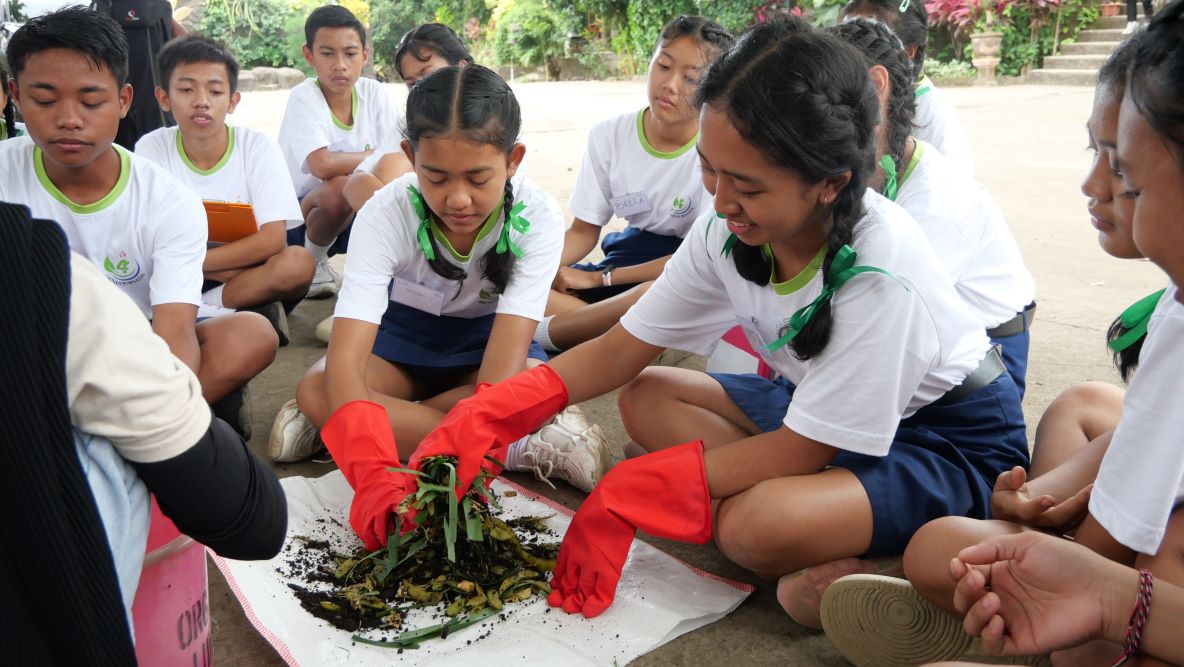Source: http://erabaru.net/nasional/50-jakar...ies-virus-baru
Flu Burung Lahirkan Spesies Virus Baru
Era Baru News Senin, 01 Februari 2010
Bird Flu Virus born New Species
New Era News monday, 01 Februari 2010
burungDenpasar flu - Professor of Udayana University, Prof. Dr. I Gusti Ngurah drh Mahardika Kade asserted, the circulation of avian influenza in poultry in the long run lead to the emergence of a new group of viruses that are genetically very different.
"It was a result of research conducted during the last two years," said a well Mahardika Biomedics and Head of the Laboratory of Molecular Biology at the Faculty of Veterinary Medicine (FKH) Udayana University in Denpasar on Monday (01/02).
He said the difference is genetically far enough to reach 8.7 percent compared with the original virus.
"Isolates, isolates were found in a large chicken farm which generally has been vaccinated," said Mahardika, alumnus of S-2 and S-3 a higher education institution in Germany.
Origin of these viruses introduced since 2003, and previous studies concluded, all of Indonesia bird flu evolved from a single introduction.
The condition was predicted to come from a domestic poultry in southern China, which in turn has reached endemic conditions and developed into a group.
Mahardika added, genertik groups A, B and C are typical in each island, all at the Pulai bersikulasi Java.
But the final findings show that recent isolates, isolates vary significantly with group A, B and C, although still clearly evolved from a virus group A.
In addition to mutation, a new virus that also has a deletion of codons that have not been revealed before.
Incidence of mutations and deletions are signyal appearance of the virus with the potential capacity to jump the species barrier and can be transmitted easily between humans, said Mahardika. (Ant / waa)
Flu Burung Lahirkan Spesies Virus Baru
Era Baru News Senin, 01 Februari 2010
Bird Flu Virus born New Species
New Era News monday, 01 Februari 2010
burungDenpasar flu - Professor of Udayana University, Prof. Dr. I Gusti Ngurah drh Mahardika Kade asserted, the circulation of avian influenza in poultry in the long run lead to the emergence of a new group of viruses that are genetically very different.
"It was a result of research conducted during the last two years," said a well Mahardika Biomedics and Head of the Laboratory of Molecular Biology at the Faculty of Veterinary Medicine (FKH) Udayana University in Denpasar on Monday (01/02).
He said the difference is genetically far enough to reach 8.7 percent compared with the original virus.
"Isolates, isolates were found in a large chicken farm which generally has been vaccinated," said Mahardika, alumnus of S-2 and S-3 a higher education institution in Germany.
Origin of these viruses introduced since 2003, and previous studies concluded, all of Indonesia bird flu evolved from a single introduction.
The condition was predicted to come from a domestic poultry in southern China, which in turn has reached endemic conditions and developed into a group.
Mahardika added, genertik groups A, B and C are typical in each island, all at the Pulai bersikulasi Java.
But the final findings show that recent isolates, isolates vary significantly with group A, B and C, although still clearly evolved from a virus group A.
In addition to mutation, a new virus that also has a deletion of codons that have not been revealed before.
Incidence of mutations and deletions are signyal appearance of the virus with the potential capacity to jump the species barrier and can be transmitted easily between humans, said Mahardika. (Ant / waa)

Comment